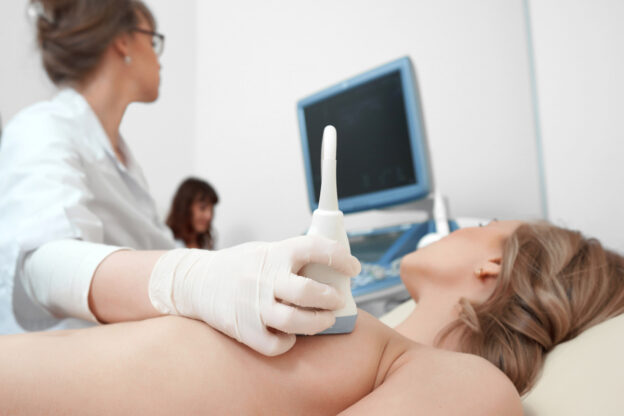10 Questions You Have About Breast Augmentation, Answered by a Board Certified Plastic Surgeon
Are you curious about breast augmentation—the procedure, the possible risks, and the life-changing results? There are no wrong questions when it comes to preparing for plastic surgery. As breast augmentation attracts ever-increasing interest, you are wise to wonder what implants can do for you. Let’s talk about 10 common questions that women bring to their first consultation:
-
- Can you get mammograms with implants?
- How do I choose my breast implant size?
- What if I am unhappy with the results of my breast augmentation?
- Do silicone or saline implants last longer?
- Do I have to get MRI screenings with silicone breast implants?
- What are the options for breast implant placement?
- What common side effects will I experience after breast augmentation?
- Is it normal for breasts to be hard and high after breast augmentation?
- Is it normal to feel depressed after breast augmentation?
- Can I breastfeed after surgery?
Can you get mammograms with implants?
Yes! Women with breast implants should follow the recommended screening protocol their primary physician prescribes, just as they would without implants. Simply tell the mammogram technician that you have breast implants before the screening exam, and they will make sure to include special implant views for the radiologist.
How do I choose my breast implant size?
Choosing your implant size might seem as simple as getting the same implants as your friend or as seen in your favorite before and after photos, however, the decision-making process is far more complex. What looks good on your friend isn’t likely to be right for you, unless you happen to have amazingly similar anatomy and share the same goals.
We now have hundreds of choices for breast implants, with different filling, profiles, widths, and volumes. While the options may seem overwhelming initially, the variety of options enable your surgeon to achieve proportionate, attractive results and to give you the shape you desire. During your consultation, your surgeon will listen to your needs, present a range of options, and help you select the appropriate implants. You will be able to look at before and after photos of similar patients, feel sample implants, and even try on special breast implant sizers to get a feel for what your results may look like with different options.
What if I am unhappy with the results of my breast augmentation?
The satisfaction rate among breast augmentation patients is incredibly high. According to RealSelf, 98% of patients report that their procedure was “worth it.” In the hands of an experienced board certified plastic surgeon, patients are likely to love their results and experience fewer complications. It is our primary goal to make your vision a reality.
If you find yourself unhappy with your primary breast augmentation or have experienced a complication, implant removal or exchange is also an option. Secondary breast procedures are popular after patients undergo life changes, such as pregnancy, breastfeeding, or weight loss; when they want to explore newer generation breast implant options; or when they simply have a change in aesthetic goals.
Do silicone or saline implants last longer?
The most common type of breast implant used is the silicone implant, which is filled with silicone gel to create a natural-feeling result. These implants are designed to last for a decade or longer. Saline implants, which are filled with saltwater, are similarly long-lasting. With either type of implant, patients should return for a checkup around ten years after the initial surgery to ensure that the implants are still in good condition. While it is not necessary to automatically exchange implants 10 years after placement, many patients seek a change around this time. The implant rupture rate also starts to gently increase after 10 years.
Do I have to get MRI screenings with silicone breast implants?
To monitor for rare cases of rupture, patients with silicone implants are encouraged by the FDA to have their implants checked 3 years after surgery using MRI, then every 2 years after that. We now know that advanced ultrasound also comes very close to MRI in diagnosing implant rupture. While saline implant rupture can typically be diagnosed by a physical exam, silicone implant rupture is more difficult to detect without imaging.
What are the options for breast implant placement?
For most patients, placing the implants under the pectoralis muscle (submuscular) is a better choice when compared with placement under the breast tissue (subglandular). Patients report a more natural look and a comfortable feel, and the implant is less likely to interfere with mammograms or breastfeeding in the submuscular position. Rates of capsular contracture (when the scar capsule around the implant abnormally tightens) are lower when the implant is under the muscle, as well. Still, subglandular placement works for some women, and the implants do settle into place more quickly. Learn more about the results of different placements in my blog post “When the Bandages Come Off.”
What common side effects will I experience after breast augmentation?
Patients who know what to expect after surgery and follow the post-operative guidelines are likely to find the recovery process manageable. We go over a complete list of side effects at your consultation. Here are a few common, but temporary, side effects to anticipate:
- Soreness, tightness, and swelling
- Temporary appearance of “hard and high” breasts
- Temporary increase or decrease in sensation
- Fatigue during recovery
In rare cases, more serious complications are possible. We educate our patients on these risks. You can rest assured knowing that I only perform surgery in accredited, safe facilities to help lower the risk of complications.
Is it normal for breasts to be hard and high after breast augmentation?
If the implants are placed under the muscle, the breasts will appear “hard and high” at first due to the reaction of the pectoralis major muscle. The pectoralis muscle tightens over the implant, especially in athletes, leading to a temporarily elevated and unnatural appearance. Over the course of several weeks, the implants will “drop and fluff” to a more natural position as the muscles relax.
Is it normal to feel depressed after breast augmentation?
Research has shown that procedures like breast augmentation boost well-being in categories like goal attainment, self-esteem, and mental health. While board certified plastic surgeons are careful to only treat patients who are good candidates for a procedure, a short period of sadness is completely normal after any surgery—especially during the time you are coping with healing incisions and aren’t yet able to envision your final results. If you continue to feel depression long-term, seek help with a therapist or ask your family doctor to refer you to someone who can help.
Can I breastfeed after surgery?
It is safe to breastfeed with implants. If this is something you desire, we will decide on the incision and implant placement that is most likely to preserve your ability to successfully breastfeed after recovery. Incision placement and your chosen implant size most directly influence future breastfeeding after surgery. In most cases, breast augmentation patients are able to breastfeed normally.
Start the Conversation
To learn what you can expect in each stage of the process, from consultation to your final results, you can also consult my breast augmentation video Q&A. When you’re ready to schedule a consultation, we’re ready to answer your questions and learn your goals. At Kirby Plastic Surgery in Fort Worth, we are taking safety measures to keep our community healthy while still offering in-person consultations for breast augmentation. For those who prefer to begin the conversation from the comfort of their home, we offer virtual consultations with board certified plastic surgeon, Dr. Kirby and our Fort Worth team. Call (817) 292-4200 or contact us online to begin.



